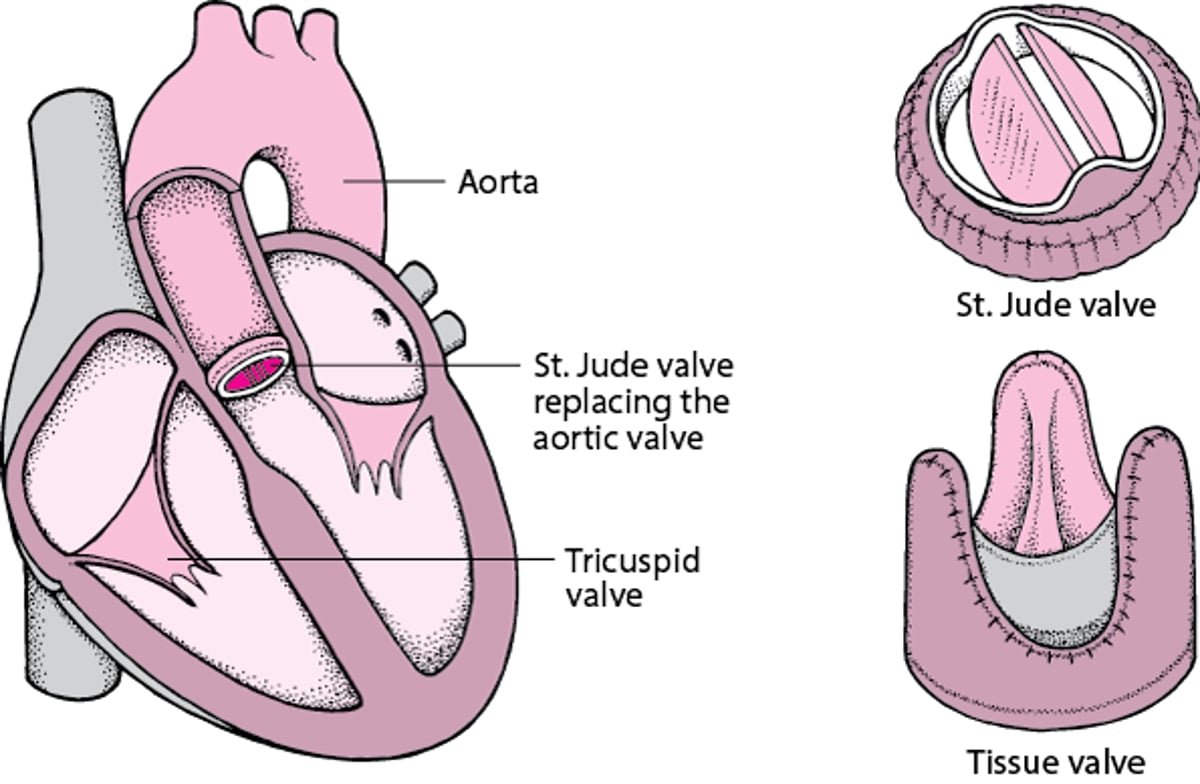Replacing a Heart Valve
A damaged heart valve may be replaced with a mechanical valve made of plastic and metal or with a bioprosthetic valve made of heart valve tissue, usually from pigs, placed in a synthetic ring. There are many types of mechanical valves. A St. Jude valve is commonly used.
Choice of a valve depends on many factors, including characteristics of the valve. A mechanical valve lasts longer than a bioprosthetic valve but requires that anticoagulants be taken indefinitely to prevent the formation of blood clots on the valve. A bioprosthetic valve requires only short-term use of anticoagulants. So whether a person can take anticoagulants is an important factor. For example, anticoagulants may not be appropriate for women of childbearing age because anticoagulants cross the placenta and may affect the fetus. Also considered are
How old the person is
What the person's activity level is
How well the heart is working
Which heart valve is damaged
When an aortic valve is being replaced, a mechanical valve is usually chosen for people who are under age 50 and a bioprosthetic valve is chosen for those age 50 or older.
When a mitral valve is being replaced, a mechanical valve is usually chosen for people who are under age 65 and a bioprosthetic valve is chosen for those age 65 or older.
The tricuspid and pulmonic valves do not need to be replaced or repaired as often as the aortic or mitral valves.
For heart valve replacement, a general anesthetic is given. The heart must be still to be operated on, so a heart-lung machine is used to pump blood through the bloodstream. The damaged valve is removed, and the replacement valve is sewn in place. The incisions are closed, the heart-lung machine is disconnected, and the heart is restarted. The operation takes from 2 to 5 hours. For some people, a heart valve can be replaced using a less invasive procedure (without cutting through the sternum), available at some medical centers. The length of the hospital stay varies from person to person. Full recovery may take 6 to 8 weeks.

